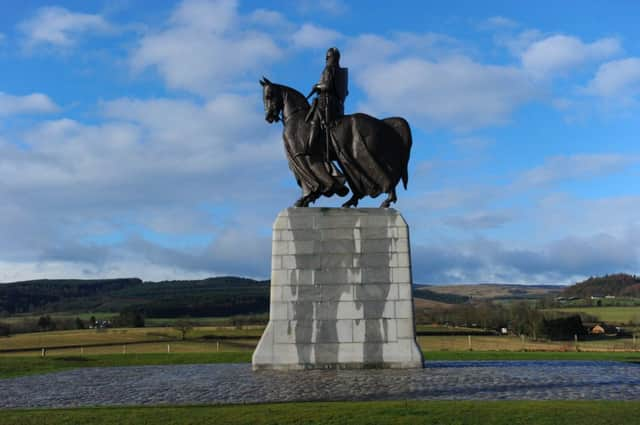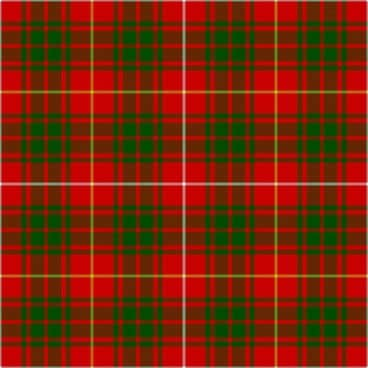Scottish Clan profile: Bruce


The name has its roots in France’s northern coast, originating with the name Bruis or De Bruis derived from the town of Brix, in Normandy.
Several De Brus are thought to have followed William the Conqueror and his Norman invasion of Britain in 1066, however the name did not reappear until 1106 when Robert De Brus arrived in England with King Henry I after his victory at the battle of Tinchebray.
Advertisement
Hide AdDe Brus eventually became a Companion at arms with Prince David of Scotland, following him north in his battles to re-claim his kingdom.


Lordship of Annandale
During this time De Brus was given lands in England by Henry and in Scotland by David, who declared him the first Lord of Annandale.
The establishment of the family’s claim to the royal line came in 1219 when Robert, 4th Lord of Annandale married Isobel, the niece of William the Lion. This marriage brought great wealth and lands to the family and after the death of Alexander III, Robert, the fifth Lord of Annandale claimed succession.
Foundations of Royalty
Robert was not the only claimant, his rival John Baliol had also staked claims, while the true heir Margaret died while travelling to Scotland to claim her throne. The threat of civil war lingered until the Lords of Scotland asked the then King of England, Edward the 1st to intervene. Edward however had other ideas and picking John Baliol, forced the new Scottish king to bow his knee to the English crown.
John rebelled and was captured, where he was taken to London to languish in prison.
Robert the Bruce, the seventh Lord of Annandale, was forced to swear allegiance to the English crown along with other Scottish Lords, as Edward continued to extend his influence, however it was not long before the Bruce turned to Rebellion with thoughts of claiming the now vacant throne.
Advertisement
Hide AdThe Bruce assassinated his only rival, John Comyn at Greyfriars church in Dumfries before taking the crown at Scone in 1306.
Scottish Wars of Independence
Robert lead Scotland during the Wars of Scottish Independence against England. He fought successfully during his reign to regain Scotland’s place as an independent nation, defeating the English at Bannockburn in 1314 and is today remembered in Scotland as a national hero.
Advertisement
Hide AdIn 1320 Robert submitted the declaration of Arbroath to Rome and the Pope, the declaration went on to become one of the most famous documents in Scottish history.
Though the Bruces maintained the royal line for several generations, they would never again reach the height of power they had done through Robert the Bruce.
Other Notable Bruces
Other notable Bruces included Edward Bruce, who accompanied James IV to claim the English throne in 1603 and became the Master of Rolls for the English Judiciary.
The Bruces also gained the Earlship of Elgin during this period and Thomas Bruce, the seventh earl spent much of his fortune rescuing marble sculptures from disrepair in the Pantheon in Greece, these items later became known as the Elgin marbles, in honour of Thomas Bruce.
Clan Motto: Fuimus meaning ‘We have been’ or ‘We endure’
Sub septs: Airth, Bruwes, Bruss, Bruc, Bruys, Brues, Brice, Bryce, Bruce, Bruice, Bruis, Bruze, Broce, Brois, Broiss, Brose, Broise, Brouss, Brus, Bruse, Carlysle, Carruthers, Crosbie, De Brix, Leggat, Randolph, Stenhouse
Notable castles: Fyvie Castle, Airth Castle, Muness Castle, Thomaston Castle, Culross Palace, Clackmannan Tower, Fingask Castle, Kinross House, Lochleven Castle, Lochmaben Castle, Turnberry Castle
Current clan base: Broomhall house
Current clan chief: Andrew Bruce, 11th Earl of Elgin